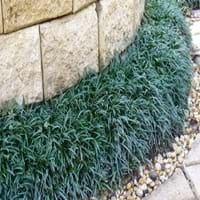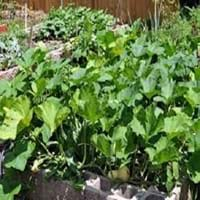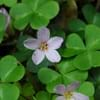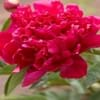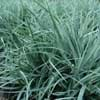Life Span
Perennial
Annual
Origin
Japan
North America, Mexico, Central America, South America
Types
Not Available
Neck, Really Big Hybrid, Waltham
Habitat
Damp shady woods, foothill woods, Lowland
Cultivated Beds
USDA Hardiness Zone
6-11
9-11
Sunset Zone
H1, H2, 5, 6, 7, 8, 9, 14, 15, 16, 17, 18, 19, 20, 21, 22, 23, 24
A1, A2, A3, H1, H2, 1a, 1b, 2a, 2b, 3a, 3b, 4, 5, 6, 7, 8, 9, 10, 11, 12, 13, 14, 15, 16, 17, 18, 19, 20, 21, 22, 23, 24
Habit
Clump-Forming
Prostrate/Trailing
Flower Color
White, Lavender
Yellow, Gold
Flower Color Modifier
Bicolor
Bicolor
Fruit Color
Indigo, Dark Blue, Black
Peach, Tan
Leaf Color in Spring
Dark Green
Green, Dark Green
Leaf Color in Summer
Dark Green
Green, Dark Green
Leaf Color in Fall
Dark Green
Green, Dark Green, Yellow green
Leaf Color in Winter
Light Green
Not Available
Leaf Shape
Grass like
Heart-shaped
Plant Season
Spring, Summer, Fall, Winter
Summer, Fall
Sunlight
Full Sun, Partial Sun, Partial shade
Full Sun
Growth Rate
Medium
Very Fast
The pH of Soil
Acidic, Neutral
Neutral
Soil Drainage
Well drained
Well drained
Bloom Time
Late Spring, Early Summer, Summer
Early Summer, Summer, Indeterminate
Tolerances
Drought
Drought
Where to Plant?
Ground
Container, Ground, Pot
How to Plant?
Root Division
Seedlings
Plant Maintenance
Medium
Medium
Watering Requirements
Regular watering during dry periods
Average Water Needs
In Summer
Lots of watering
Lots of watering
In Spring
Moderate
Moderate
In Winter
Average Water
Average Water
Soil pH
Acidic, Neutral
Neutral
Soil Drainage Capacity
Well drained
Well drained
Sun Exposure
Full Sun, Partial Sun, Partial shade
Full Sun
Pruning
Remove damaged leaves, Remove dead branches, Remove dead leaves
Remove damaged leaves, Remove dead branches, Remove dead leaves, Remove dead or diseased plant parts
Fertilizers
All-Purpose Liquid Fertilizer
Apply 10-10-10 amount, Apply 12-12-12 amounts, Nitrogen, Phosphate, Potassium
Pests and Diseases
Not Available
Red blotch
Plant Tolerance
Drought
Drought
Flower Petal Number
Single
Single
Foliage Texture
Medium
Coarse
Foliage Sheen
Glossy
Matte
Attracts
Hummingbirds
Ants, Bees
Allergy
Asthma
Dermatitis
Aesthetic Uses
Borders
Not Used For Aesthetic Purpose
Beauty Benefits
Not Available
Glowing Skin, Good for skin and hair
Environmental Uses
Air purification
Air purification
Medicinal Uses
Antipyretic, Antiscrophulatic, Antitussive, Aphrodisiac
Antiasthamatic, anti-cancer, anti-inflammatory, Cardiovascular problems, cholesterol-lowering, constipation, Diabetes, Fiber, High blood pressure, Immunity, Manganese, Rich in Potassium, Vitamin A, Vitamin C, Vitamin E
Part of Plant Used
Root
Flowers, Fruits, Leaves, Seeds
Other Uses
useful as a ground cover
For making oil, Used As Food
Used As Indoor Plant
No
Yes
Used As Outdoor Plant
Yes
Yes
Garden Design
Container, Edging, Groundcover, Mixed Border, Rock Garden, Wall
Edible, Herb / Vegetable, Vine
Botanical Name
OPHIOPOGON japonicus
CUCURBITA moschata 'Quantum'
Common Name
Mondo grass, lily turf, snakebeard
Butternut Squash
In Hindi
Mondo Grass
Butternut Squash Plant
In German
Mondo Grass
Butternut Squash-Anlage
In French
Mondo Grass
Courge musquée Plante
In Spanish
Ophiopogon planiscapus
Planta de la calabaza de Butternut
In Greek
Mondo Grass
Κολοκύθια Φυτών
In Portuguese
Mondo Grass
Butternut Squash planta
In Polish
Mondo Grass
Piżmowa roślin
In Latin
Mondo Grass
Planta butternut cucurbitae
Phylum
Embryophyta
Magnoliophyta
Class
Liliopsida
Magnoliopsida
Family
Liliaceae
Cucurbitaceae
Genus
Ophiopogon
Cucurbita
Clade
Angiosperms, Monocots
Angiosperms, Eudicots, Rosids
Tribe
Not Available
Not Available
Subfamily
Not Available
Papilionoideae
Number of Species
Not Available
Importance of Mondo Grass and Butternut Squash
Want to have the most appropriate plant for your garden? You might want to know the importance of Mondo Grass and Butternut Squash. Basically, these two plants vary in many aspects. Compare Mondo Grass and Butternut Squash as they differ in many characteristics such as their life, care, benefits, facts, etc. Every gardener must at least have the slightest clue about the plants he wants to plant in his garden. Compare their benefits, which differ in many ways like facts and uses. The medicinal use of Mondo Grass is Antipyretic, Antiscrophulatic, Antitussive and Aphrodisiac whereas of Butternut Squash is Antiasthamatic, anti-cancer, anti-inflammatory, Cardiovascular problems, cholesterol-lowering, constipation, Diabetes, Fiber, High blood pressure, Immunity, Manganese, Rich in Potassium, Vitamin A, Vitamin C and Vitamin E. Mondo Grass has beauty benefits as follows: Not Available while Butternut Squash has beauty benefits as follows: Not Available.
Compare Facts of Mondo Grass vs Butternut Squash
How to choose the best garden plant for your garden depending upon its facts? Here garden plant comparison will help you to solve this query. Compare the facts of Mondo Grass vs Butternut Squash and know which one to choose. As garden plants have benefits and other uses, allergy is also a major drawback of plants for some people. Allergic reactions of Mondo Grass are Asthma whereas of Butternut Squash have Dermatitis respectively. Having a fruit bearing plant in your garden can be a plus point of your garden. Mondo Grass has no showy fruits and Butternut Squash has showy fruits. Also Mondo Grass is not flowering and Butternut Squash is not flowering . You can compare Mondo Grass and Butternut Squash facts and facts of other plants too.
